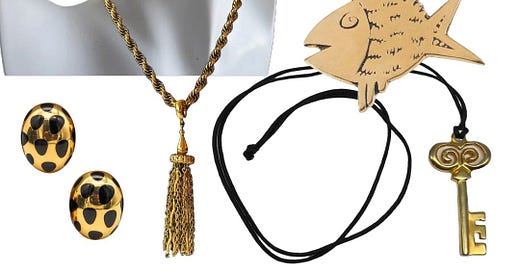From clothing to furniture to art, I'm a sucker for a good second-hand find. But let's be honest, jewelry is my weakness. My collection is mostly made up of second-hand finds – a mix of things I picked up while working in the industry and some amazing discoveries on online marketplaces like Ruby Lane, Etsy, and eBay. I've been collecting for years now, …
Keep reading with a 7-day free trial
Subscribe to Vejeweled to keep reading this post and get 7 days of free access to the full post archives.



